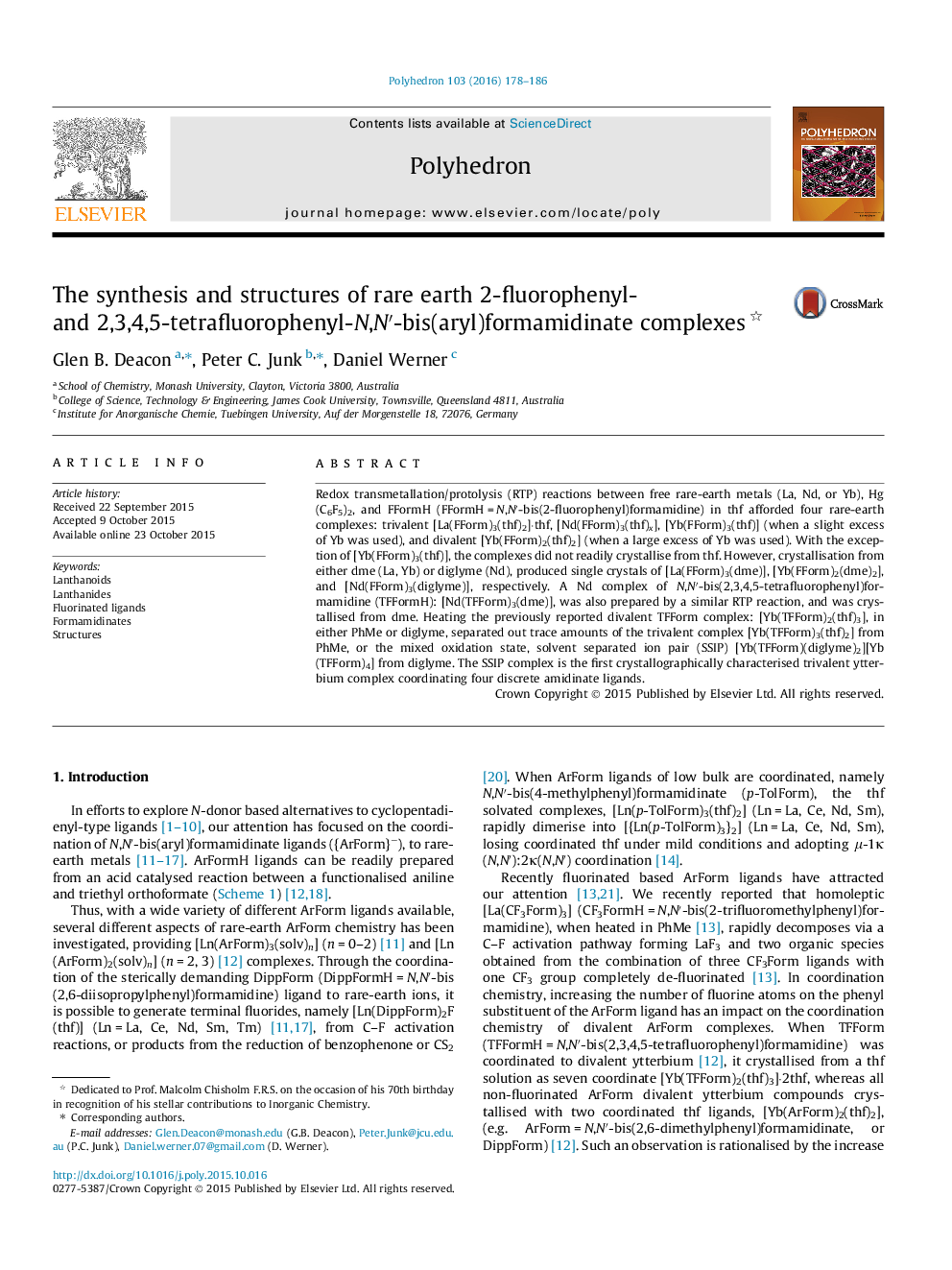| Article ID | Journal | Published Year | Pages | File Type |
|---|---|---|---|---|
| 1335857 | Polyhedron | 2016 | 9 Pages |
Redox transmetallation/protolysis (RTP) reactions between free rare-earth metals (La, Nd, or Yb), Hg(C6F5)2, and FFormH (FFormH = N,N′-bis(2-fluorophenyl)formamidine) in thf afforded four rare-earth complexes: trivalent [La(FForm)3(thf)2]·thf, [Nd(FForm)3(thf)x], [Yb(FForm)3(thf)] (when a slight excess of Yb was used), and divalent [Yb(FForm)2(thf)2] (when a large excess of Yb was used). With the exception of [Yb(FForm)3(thf)], the complexes did not readily crystallise from thf. However, crystallisation from either dme (La, Yb) or diglyme (Nd), produced single crystals of [La(FForm)3(dme)], [Yb(FForm)2(dme)2], and [Nd(FForm)3(diglyme)], respectively. A Nd complex of N,N′-bis(2,3,4,5-tetrafluorophenyl)formamidine (TFFormH): [Nd(TFForm)3(dme)], was also prepared by a similar RTP reaction, and was crystallised from dme. Heating the previously reported divalent TFForm complex: [Yb(TFForm)2(thf)3], in either PhMe or diglyme, separated out trace amounts of the trivalent complex [Yb(TFForm)3(thf)2] from PhMe, or the mixed oxidation state, solvent separated ion pair (SSIP) [Yb(TFForm)(diglyme)2][Yb(TFForm)4] from diglyme. The SSIP complex is the first crystallographically characterised trivalent ytterbium complex coordinating four discrete amidinate ligands.
Graphical abstractA range of rare earth complexes involving fluorinated formamidinato complexes have been synthesised. Crystallisation from either dme or diglyme produced single crystals of all compounds and their X-ray crystal structures were determined.Figure optionsDownload full-size imageDownload as PowerPoint slide
